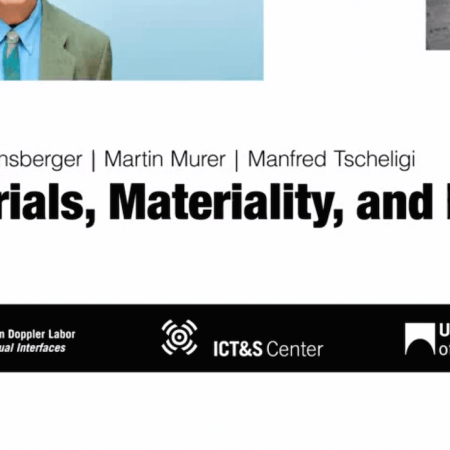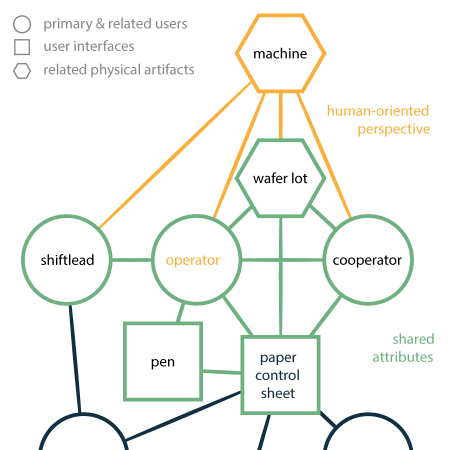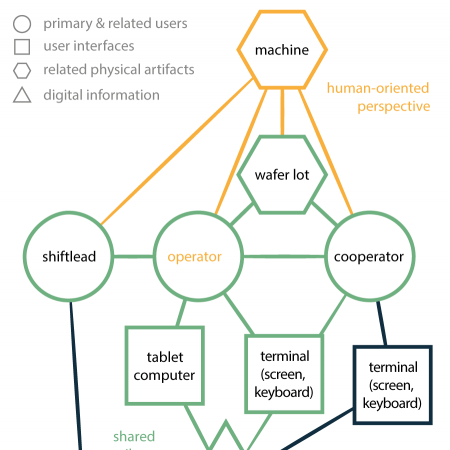]The scientific discourse in HCI and Interaction Design on materiality emphasizes the great importance of how material artifacts shape our interaction and experience.
Contributing to this discourse, we initially reflected on different human and non-human actors in HCI and Interaction Design, in order to characterize their relationships. In this work, we draw on Actor-Network Theory (ANT), e.g., [2] and McLuhan’s media analysis, e.g., [3]. By referring to these two theoretical notions, we made visible the network of materials, designers, and users. We also reflected on the potential of „new“ (computational) materials being able to provide new ways of interaction and rich sensory effects.
In addition to this reflection on materials and human actors, we discussed the notion of „materiality“ in more detail. We collected several concepts of materiality in HCI, Interaction Design, and Textual Studies. What these concepts share is that they consider materiality as being layered (e.g., layers of computational and analog materials). Among others, we concluded that „[…] materials is what we work with, materiality is what emerges through design or usage. The perception of digital material is only possible through combinations with other materials, allowing the emergence of materialities in an interaction.“ [1]
In order to capture the materiality of interactions when it comes to users interacting with artifacts, we again referred to Actor-Network Theory (and its refinement towards Monads). We proposed a methodological approach to assess materiality and applied it in a semi-conductor factory (thereby comparing the materiality of digital and physical artifacts). Through alternating our analysis of the interactions between a human-oriented and an artifact-oriented perspective, we found a variety of qualities accounting for materiality. In order to substantiate our materiality-centered approach, we are planning further studies to not only assess the materiality of interactions in this specific context, but in further contexts as well as design cases.
Finally, we reflected on how temporal aspects would influence the materiality of interaction. Therefore, we initially collected notions of time in Interaction Design. Using this as a starting point, we aim to further elaborate on the effects of time as an actor in HCI and Interaction Design, which influences, for instance, design materials and artifacts and the perception of their materiality.
[1] Fuchsberger, V., Murer, M., Wurhofer, D., Meneweger, T., Neureiter, K., Meschtscher- jakov, A., and Tscheligi, M. The multiple layers of materiality. In Proceedings of the 2014 Companion Publication on Designing Interactive Systems (New York, NY, USA, 2014), DIS Companion ’14, ACM, pp. 73–76.
[2] Latour, B. Reassembling the Social. An Introduction to Actor-Network-Theory. Oxford University Press, 2007.
[3] McLuhan, M., and Fiore, Q. The Medium is the Massage. Penguin Books, 1967.









